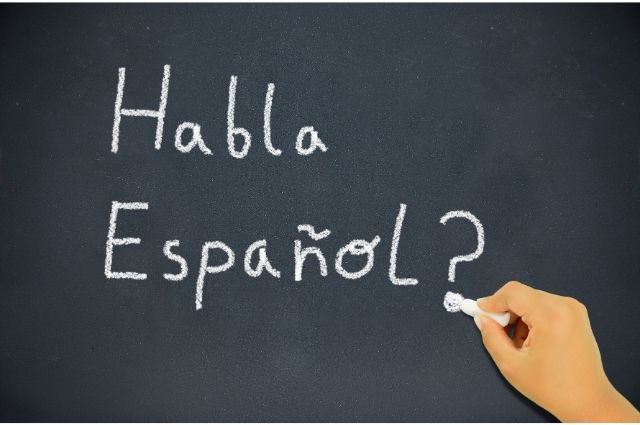
The Secret to Finding Your Ideal Spanish Language Partner
What’s the main obstacle you’ve encountered while learning Spanish?
One of the most common answers to that question is that learners of a new language have a hard time putting in practice all the theory they’ve learned in class.
What’s the solution? You need to talk to a Spanish speaker! If they are native, even better. It helps you not only with your oral skills, but also with your listening skills.
The key to fluency is to practice with a Spanish language partner—but more importantly, the right Spanish language partner for you. How do you know what to look for in your search for a language exchange partner? I’m here to help you find out!
My Personal Experience
I’m a native Spanish speaker who studied English during my school years. By the time I got to college, I enrolled myself in a language academy and studied there for a whole year. Then I passed the TOEFL exam with a satisfactory grade.
I was confident that I knew English by then. But life was eager to challenge my assumptions, taking me to London where I discovered how terribly wrong I was. I could barely communicate with anyone! Understanding native English speakers was nearly impossible for me.
Having never practiced before in real life, all I knew of English was the grammar and theory I got in the classroom.
Eventually, I got used to the distinctive British accent, the native speakers’ talking speed and, little by little, all the knowledge that I did have began to resurface.
You can easily avoid the troubles I went through if you look for a Spanish language partner!
What’s a Spanish Language Partner?
A language partner, also known as language exchange partner or tandem conversation partner, is someone who agrees to speak with you in your target language—in this case, Spanish. In exchange, you agree to speak to your new partner in their target language, which most times coincide with your native language.

It makes sense, doesn’t it? You get to talk to a native Spanish speaker and in return, all you have to do is talk in your own language to this person. You practice, your partner practices, you both win.
However, it’s not that simple. It never is, right?
To understand the broader picture and purpose of having a language exchange partner, it’s useful to weigh the pros and cons. Let’s see what they are:
Pros
1. You get to practice with a native Spanish speaker
It’s hard to overstate how important this is. Just by listening to a native Spanish speaker, you’ll get used to the nuances of spoken language and its different accents. Think of it as training for your ear.
If I had had an English language partner back in the day, things would have been much easier for me in London. I was never exposed to the different British accents before my arrival and now I understand how big of a mistake that was!
2. It’s free
A language exchange shouldn’t cost you any money. You still need to do something in return, so it’s not exactly free, but you know what I mean.
Also, one of the advantages of free things is that you can get as much as you want or need. All you need to do is talk to your partner about it and come to an agreement on the amount of time you both want to invest in this.
3. Social & Cultural Benefits
Having your own Spanish language partner is an opportunity to make a friend and get to know more about a new culture.
This also works as a source of motivation! Don’t look at it as class or work, but as a chance to talk to your friend. It’s a fun thing to do, instead of a chore or task.
Cons
1. A partner is not a teacher
This is very important. You have to understand that your partner is a person just like you, trying to learn a new language. Can you see yourself teaching English grammar to someone else? Then you can’t expect that from your Spanish language partner.
When doubts arise or you don’t understand what your partner is saying, you don’t have a professional in front of you to answer your questions in a lesson format.
2. Informality
As none of you are professionals, it’s common that your sessions lack organization and formality. You don’t know where to take the conversation, who should be in charge of it, or when to stop talking in one language and make the switch to the other.
3. Instability
The one bad thing about free stuff is that people tend not to care enough about them. One day you find a partner that you feel comfortable with, and the next day he’s gone and you need to start looking for a new one.
This is a problem, not only because of the rapport already built that you lose, but because you have to start all over again with your new partner and have the same basic “get-to-know-you” conversation that you already had with your last partner.
How Do You Find a Spanish Language Partner?
Finding an in-person language exchange partner may be more or less complicated depending on where you live. Meeting in person (once the social distancing period is over) is an undeniable advantage to learning since it feels more like a fun social activity than work and you get to hang out while you improve your language skills.
So, how do you make this happen? A couple of websites allow like-minded people to connect with each other and set up a way to meet:
Craigslist, on this website you can find pretty much anything. From a job to a car, including language exchange partners. Take a look at the community ads, or leave your own and let people know what you are looking for.
Meetup creates online groups for people with similar interests and the host in-person events. The site is perfect to find language enthusiasts just like you.
University message boards and local language centers are also good options for finding an in-person Spanish language partner.
However, these days everything gets done so easily online that you don’t need to leave your house to talk with your language partner.
So, if your choice is having virtual exchanges, these sites are good options:
Tandem Partners is free and easy to use and it offers the option of choosing if you are looking to meet in person or online.
Conversation Exchange looks a bit outdated but it serves its purpose. Here you can look for a conversation exchange partner, a chat partner or even a penpal!
Homeschool Spanish Academy provides you with certified native Spanish-speaking teachers from Guatemala who love to talk and teach! Enjoy the best of both worlds—a tandem conversation partner and a professional who can answer all of your questions. Check out our sign-up page and start talking with a native Spanish speaker today!
Guidelines & Expectations
Once you find a Spanish language partner, make sure to establish some guidelines for the relationship and be clear about your expectations. Not all language partners are created equal.
Important things to consider and discuss with your partner:
- Are you both committed to splitting your time 50/50 for each language?
- Will you only speak in your target language? Or are you open to revert to your native languages when needed?
- How often do each of you expect to receive corrections from one another?
- Are your language levels compatible? It’s not an enjoyable experience to do a language exchange with someone who doesn’t understand most of what you are saying.
How Do You Improve Your Partnership?
Once you’ve found the right Spanish language partner for you, it’s necessary to improve your partnership over time to make the most of it.
Here are some ways to improve the effectiveness of your meetings:
- Prepare a script for your sessions, or at least an outline of the topics you would like to talk about.
- Write down any new words or phrases that you hear during your exchange and look up their meanings later.
- Make a schedule and follow it. Remember the informality of these agreements, and if you don’t take it seriously, there is a good chance that it will become a waste of time for both of you.
- Make mistakes, a lot of them! Having a language partner is your life-like opportunity to practice spontaneous conversation without the anxiety you might feel in real-life scenarios. Don’t be shy, this is like a rehearsal. Remember that your partner is in the same position as you, so no need to be afraid.
A Language Partner is Not a Teacher
Remember that a Spanish language partner is not the same as a teacher. A language partner is a good complement to your Spanish learning process, a process that you can kick start today trying a free class with one of our native Spanish-speaker teachers. Our teachers look forward to having great conversations in Spanish with you!
Want more tips and tricks on how to learn Spanish? Check these out!
- How to Finally Roll Your R’s – And Why It’s Not a Big Deal If You Can’t
- The 25 Most Useful Spanish Phrases You Need to Lear Today
- From ‘Hola’ to Holding Conversations: Your 30-Day Beginner Spanish Challenge
- How to Learn Spanish as an Adult (Even If You Think It’s Too Late)
- How to Turn Your Work from Home Routine into a Spanish Learning Advantage
- French vs Spanish for Professionals: What’s the Smarter Investment for Your Career?
- Spanish Fluency and Work Culture: The Career Advantage You Don’t Want to Miss
- French vs Spanish: 7 Reasons Spanish Could Be a Strong Long-Term Investment
- 50 Useful Spanish Transition Words for Everyday Speech and Writing - January 30, 2025
- Master the 18 Spanish Tenses (and Take Our Cheat Sheet With You) - January 23, 2025
- A Guide to Double Negatives in Spanish - December 18, 2024




